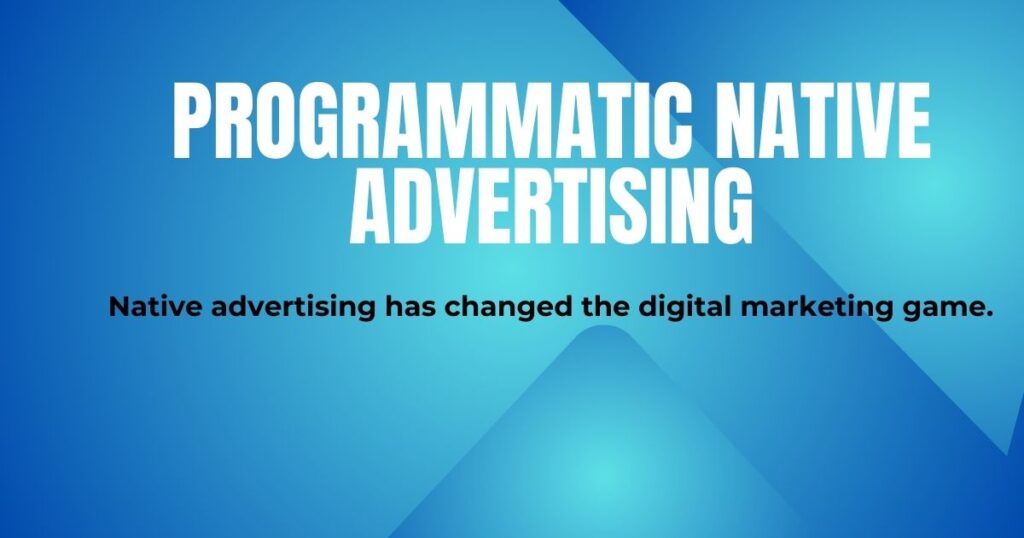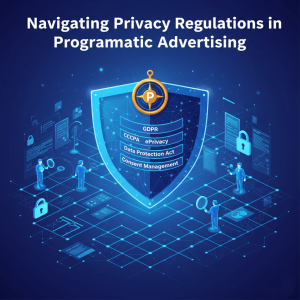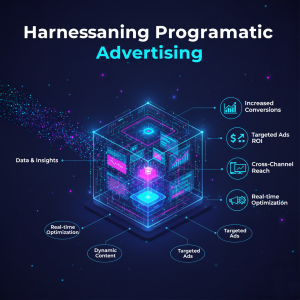What Is Programmatic Native Advertising and How Can It Elevate Your Digital Marketing Strategy?

Native advertising has changed the digital marketing game, so that now brands are in line with the content they sponsor. And when you couple this with the power of automation, you get programmatic native advertising — a revolution for contemporary marketers.
But how can it help your campaigns perform better, and what exactly is programmatic native advertising? To explain, we will demystify the term in the following blog post and explore some of its advantages, then give practical advice for when to add this tactic into your mix.
What Is Programmatic Native Advertising?
At its core, programmatic native advertising combines two elements:
- Native advertising: A form of advertising designed to match the look, feel, and function of the platform on which it appears. These ads blend into the content and do not feel out of place or intrusive.
- Programmatic advertising: The automated purchase and placement of digital ad space using data-driven technology and algorithms in real-time.
Together, programmatic native advertising allows businesses to place highly relevant, non-disruptive content in front of their target audience at scale, using programmatic technology to optimize ad delivery.
How Does Programmatic Native Advertising Work?
For ads, programmatic native advertising applies real-time bidding (RTB). Advertisers bid on audiences and specific places to display their promotions, then an algorithm finds the best moments and spots for ad appearances accordingly. Native content components (such as headlines, images, and content slots) are then made to fit the layout and style of a particular webpage or app it appears on, making it indistinguishable from others.
Here’s an example:
You’re browsing a food blog, and halfway through the article, you spot a sponsored recipe recommendation that seamlessly matches the style of the page. It looks relevant to what you’re reading, but is labeled as sponsored content. That’s programmatic native advertising at work.
The Benefits of Programmatic Native Advertising
Now that we know what programmatic native advertising is, it’s time to examine why it’s so effective. Here are some of the most significant benefits:
1. Improved User Experience
Because native ads are designed to match the visual and contextual environment of their placement, they feel more like a natural part of the content rather than intrusive advertisements. This seamless blending increases the likelihood that users will engage with the ad, reducing ad fatigue and annoyance.
2. Precise Audience Targeting
With access to extensive data, programmatic native advertising enables precise audience segmentation. Leverage parameters like demographics, location, interests, devices, and browsing behavior to ensure your ads are reaching the right people at the right time.
3. Higher Engagement Rates
Research consistently shows that native ads outperform traditional banner ads in terms of engagement. Native ads receive higher click-through rates (CTR) because they appear less pushy and provide more value to the consumer.
For example, an eMarketer study found that native ads across mobile apps generated an average CTR of 0.38%, compared to just 0.16% for display ads.
4. Real-Time Optimization
Since programmatic advertising relies on real-time technology, you’re able to monitor your campaigns 24/7 and make instant optimizations. Adjust budgets, test creatives, and refine targeting parameters to improve performance in real time.
5. Scalable Advertising
Manually running personalized campaigns at scale can be time-consuming and resource-heavy. Programmatic native advertising automates this process, meaning brands can effectively deliver tailored messages to large, diverse audiences.
6. Better ROI
With better targeting, less wasted spend on irrelevant placements, and higher engagement rates, programmatic native advertising can deliver a higher return on investment compared to traditional advertising methods.
Where To Use Programmatic Native Advertising
Programmatic native advertising can be applied across a variety of platforms and formats. Some examples include:
- Social Media Platforms: Platforms like Facebook, Instagram, and LinkedIn are built for native advertising. Ads appear as part of the scrolling experience, such as sponsored posts or stories.
-
- Publisher Websites: Native programmatic ads often show up on high-traffic publisher sites as sponsored articles, in-feed ads, or content recommendations. – Mobile Apps: Apps offer seamless integration of content, such as promoted listings, in-app recommendations, or native display ads.
How To Implement Programmatic Native Advertising
If you’re ready to integrate programmatic native advertising into your marketing strategy, here are the steps to follow:
Step 1. Understand Your Audience
The success of your campaign begins with a clear understanding of your target audience. Use your brand’s data to segment audiences by preferences, behavior, location, and purchasing habits. The better you understand your audience, the more relevant you can make your ads.
Step 2. Invest in the Right Platform
To run programmatic native ad campaigns, you’ll need access to a demand-side platform (DSP). Popular DSPs like The Trade Desk, Google Display & Video 360, or Taboola allow you to create, manage, and optimize programmatic native campaigns. Evaluate which platform suits your needs based on budget, available features, and support.
Step 3. Craft Engaging, Native-Friendly Ad Content
Your ads should seamlessly integrate into the environment they’re placed in. Focus on creating high-quality visuals, clickable headlines, and concise copy that resonates with your audience. The goal is to provide value while staying consistent with the surrounding content.
Step 4. Set Clear Goals and KPIs
Define what success looks like before launching your campaign. Common goals for programmatic native advertising include improving brand awareness, increasing website traffic, and boosting conversions. Use metrics like CTR, cost per click (CPC), and conversions to measure performance.
Step 5. Test and Optimize
Take advantage of the real-time optimization capabilities of programmatic advertising. A/B test ad variations to identify what resonates best with your audience. Continuously refine creatives, headlines, and targeting to maximize engagement.
Step 6. Monitor Compliance and Transparency
Always ensure your programmatic partner adheres to industry standards and avoids ad placements on low-quality or inappropriate websites. Transparency is key to maintaining trust with your audience and protecting your brand’s reputation.
Challenges and How To Overcome Them
While programmatic native advertising offers undeniable benefits, it’s important to be aware of potential challenges:
- Ad Fraud: Bots and fake traffic could waste your ad budget. Work with DSPs that prioritize fraud detection and verification technologies.
- Transparency Issues: Lack of visibility in programmatic supply chains can raise concerns. Ensure your DSP offers transparent reporting for every placement.
- Creative Fatigue: Even seamless ads can become repetitive. Continually refresh your visuals and copy to keep audiences engaged.
By addressing these challenges proactively, you’ll set your campaigns up for long-term success.
Unlock New Potential With Programmatic Native Advertising
Because of programmatic native advertising, businesses are reaching their audiences in new ways. Programmatic native smooths over that disconnect: it’s the power of AI-driven automation and engaging, native content put into practice for all to see. With this method, digital marketing users have a priority experience and all the ROI they could ask for.
If you are looking to improve your advertising strategy, try this new kind. Start off small and try, try again. You will find that your campaigns start turning out better results than those old-fashioned methods ever managed. The future is now for personalized and scalable advertising.





